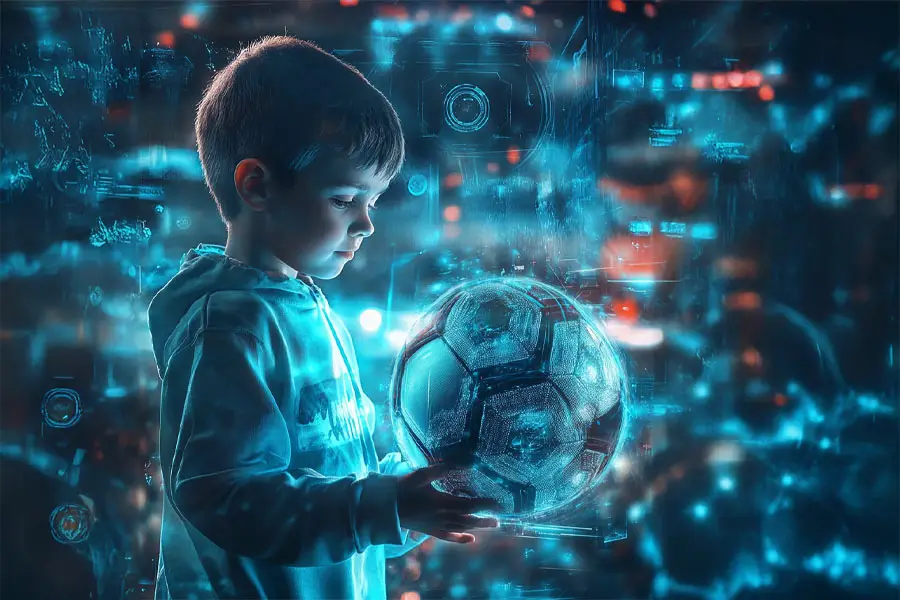Artificial intelligence (AI) is a fascinating technology. It gives computers and machines intelligence. AI may assist humans in a variety of ways, such as by answering questions or identifying faces in pictures. Here are some simple terms to understand if you are interested in learning more about AI.
1. Artificial Intelligence (AI)
The ability of a machine to perform tasks that typically require human intelligence is known as artificial intelligence, or AI. This covers activities like identifying patterns, solving problems, and drawing conclusions from data. AI, for instance, can assist a phone in recognizing a face in an image.
2. Machine Learning (ML)
AI includes machine learning, or ML. It facilitates data-driven learning for computers. This implies that computers discover patterns on their own rather than according to precise instructions. For example, ML can assist an app in making song recommendations based on your previous preferences.
3. Algorithm
A collection of instructions is called an algorithm. The computer is directed by these instructions. Algorithms in AI enable computers to learn from data. Consider an algorithm to be similar to a recipe. Similar to how a recipe aids in cake baking, an algorithm aids in computer issue solving.
4. Data
Information is data. In AI, computers learn from data. Data can take the form of words, statistics, or even images. AI performs better with more data. For instance, by examining numerous cat images, a computer can learn to identify cats in pictures.
5. Neural Network
A model that functions similarly to the human brain is called a neural network. There are “layers” that transmit information. Every layer contributes to the network’s learning. Deep learning is a sophisticated form of artificial intelligence that heavily relies on neural networks.
6. Deep Learning
One subset of machine learning is called deep learning. To learn from data, it makes use of massive neural networks with numerous layers. Deep learning is useful for jobs like picture and speech recognition and even language translation.
7. Natural Language Processing (NLP)
Computers can comprehend human language with the aid of natural language processing, or NLP. AI can read, write, and speak because of this. For instance, NLP is used by voice assistants such as Siri and Alexa to comprehend queries.
8. Computer Vision
Computers can “see” and comprehend images with the aid of computer vision. It enables computers to identify items in pictures, such as faces, vehicles, or animals. Numerous tools and applications, like photo filters and facial identification, rely on computer vision.
9. Robotics
AI is used in robotics to make robots more intelligent. After that, robots can carry out duties like cleaning, object movement, and even space exploration. AI enables robots to function without continual guidance.
10. Chatbot
A computer software that converses with humans is called a chatbot. It can provide information, respond to inquiries, and even assist with shopping. AI is used by chatbots to comprehend and respond to queries. Chatbots may appear on websites or applications.
11. Supervised Learning
AI can learn from labeled data through supervised learning. This implies that every piece of information has a response that the computer may use to learn. Labeling pictures as “dog” or “cat,” for instance, teaches the computer to identify these animals.
12. Unsupervised Learning
Without labeled data, AI can learn through unsupervised learning. On its own, the computer searches for patterns. When you are unsure of the appropriate labels, this is helpful. Without knowing what is in them, the computer can, for instance, place similar photographs together.
13. Artificial General Intelligence (AGI)
Artificial General Intelligence, or AGI, is the concept of an AI that is capable of human-like thought and learning. This type of AI performs multiple tasks. It is capable of learning a lot and even resolving novel issues. Although AGI is not yet a reality, researchers are working on it.
14. Bias
When a computer discovers unfair patterns in data, it is said to be biased. It may make mistakes as a result. For instance, the AI might not perform as well for other types of people if the data contains more images of one sort of person. To make AI equitable for everybody, AI experts work to eliminate bias.
15. Training
The process of instructing an AI model is called training. The computer examines a large amount of data during training in order to identify trends. For instance, scientists show an AI a lot of pictures of animals to teach it to recognize them. The AI can identify animals on its own after training.
Conclusion
These are excellent beginning terms for AI. You now have a rudimentary understanding of artificial intelligence. Learning AI a little at a time makes it easier, even though it may appear difficult at first. You may learn more about AI and how it is influencing our world with this knowledge.

